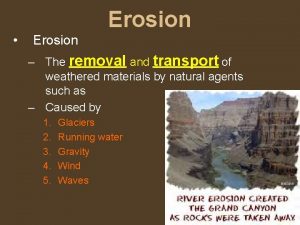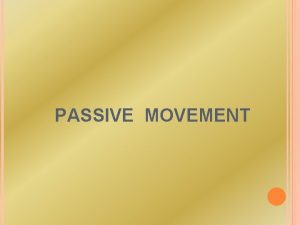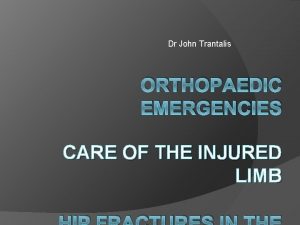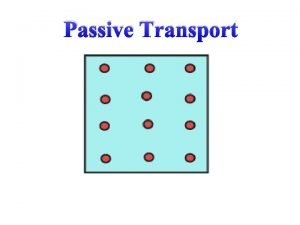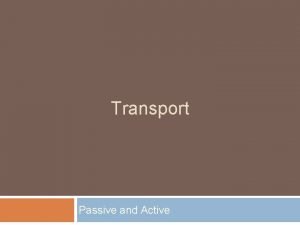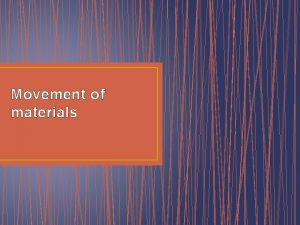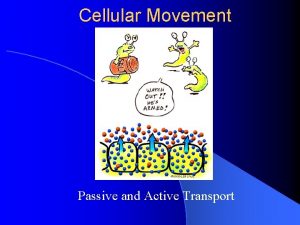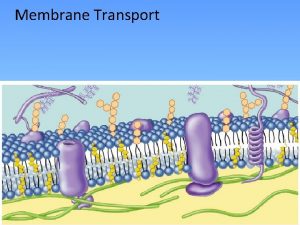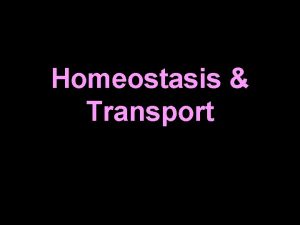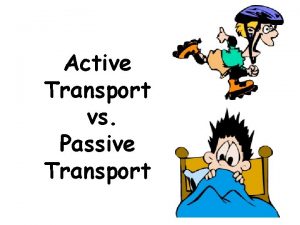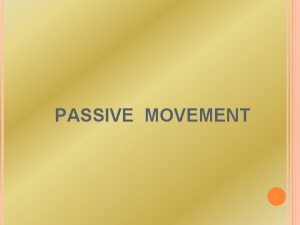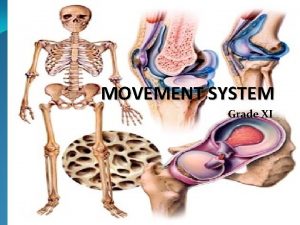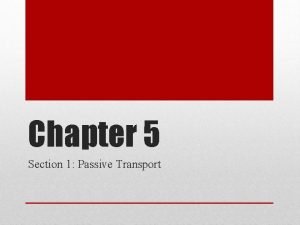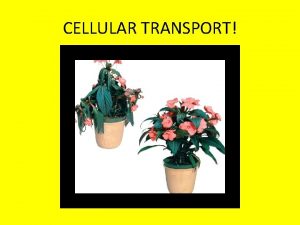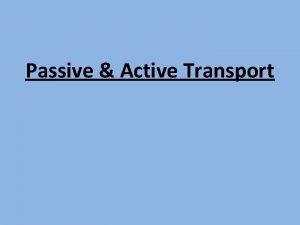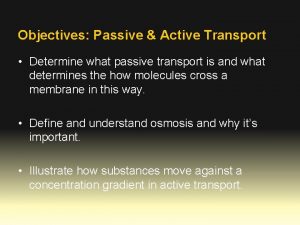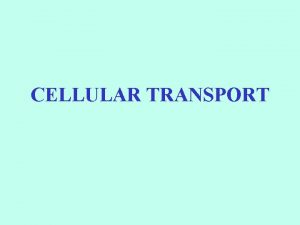Passive Transport 1 Passive Transport Movement of materials


















- Slides: 18

Passive Transport 1

Passive Transport: Movement of materials across the membrane that does not require energy 3 Types: Diffusion Osmosis Facilitated Diffusion 2

Diffusion is the movement of molecules from an area of high concentration to an area of lower concentration until they are evenly spread out 3

Factors that determine whether diffusion occurs across a membrane are concentration gradient and permeability 4

Diffusion occurs across a “concentration gradient” which is the difference between the concentration of a particular substance in one area and the concentration in an adjacent area Concentration Gradient 5

Permeability is the ability of a substance to pass through the membrane Biological membranes are selectively permeable or semi-permeable and only allow certain molecules to pass through freely by diffusion

Osmosis is the diffusion of water molecules through a selectively permeable membrane Water will continue to diffuse/move until there are equal numbers of molecules inside and outside the cell. Animation: How OSMOSIS works hypotonic isotonic hypertonic 7

Hypertonic Solutions • Solute concentration outside of the cell is higher than the solute concentration inside the cell • Water moves OUT of the cell 8

Hypotonic Solutions • Solute concentration outside of the cell is lower than the solute concentration inside the cell • Water moves INTO the cell 9

Isotonic Solution • Solute concentration in the solution is equal to the solute concentration in the cell • Water moves equally in and out of the cell 10

Which way will the water move? On the left side, more of the space is occupied by 11 solutes than by water 60% H 2 O 90% H 2 O Water will move To the left!

Which way will the water move? 80% H 2 O 100% H 2 O Water will move into the Cell 12

What type of solution is this cell in? 80% H 2 O 100% H 2 O Hypotonic Solution 13

Which way will the water move? 90% H 2 O Water will move Into and out of the cell 14

90% H 2 O What type of solution is this cell in? The cell is in a Isotonic Solution 15

Which way will the water move? 90% H 2 O 75% H 2 O Water will move out of cell 16

What type of solution is this cell in? 90% H 2 O 75% H 2 O The cell is in a Hypertonic solution 17

Some things like glucose and proteins are too large to pass though the membrane by diffusion or osmosis Carrier proteins transport (diffuse) large substances across the membrane from high to low 18 concentration
 Unlike passive transport, active transport requires *
Unlike passive transport, active transport requires * What is passive transport
What is passive transport Now answer the following questions
Now answer the following questions Active transport vs passive transport venn diagram
Active transport vs passive transport venn diagram Movement area
Movement area Locomotor movements are also called axial movements.
Locomotor movements are also called axial movements. Differentiate adopting materials and adapting materials
Differentiate adopting materials and adapting materials Favourite cars
Favourite cars Direct materials budget with multiple materials
Direct materials budget with multiple materials Useful and harmful materials meaning
Useful and harmful materials meaning Man made map
Man made map The removal and transport of weathered materials from
The removal and transport of weathered materials from Membrane structures that function in active transport
Membrane structures that function in active transport Bioflix activity membrane transport active transport
Bioflix activity membrane transport active transport Primary active transport vs secondary active transport
Primary active transport vs secondary active transport Isotonic in biology
Isotonic in biology Antiporter
Antiporter Relaxed passive movements
Relaxed passive movements Dr john trantalis
Dr john trantalis











